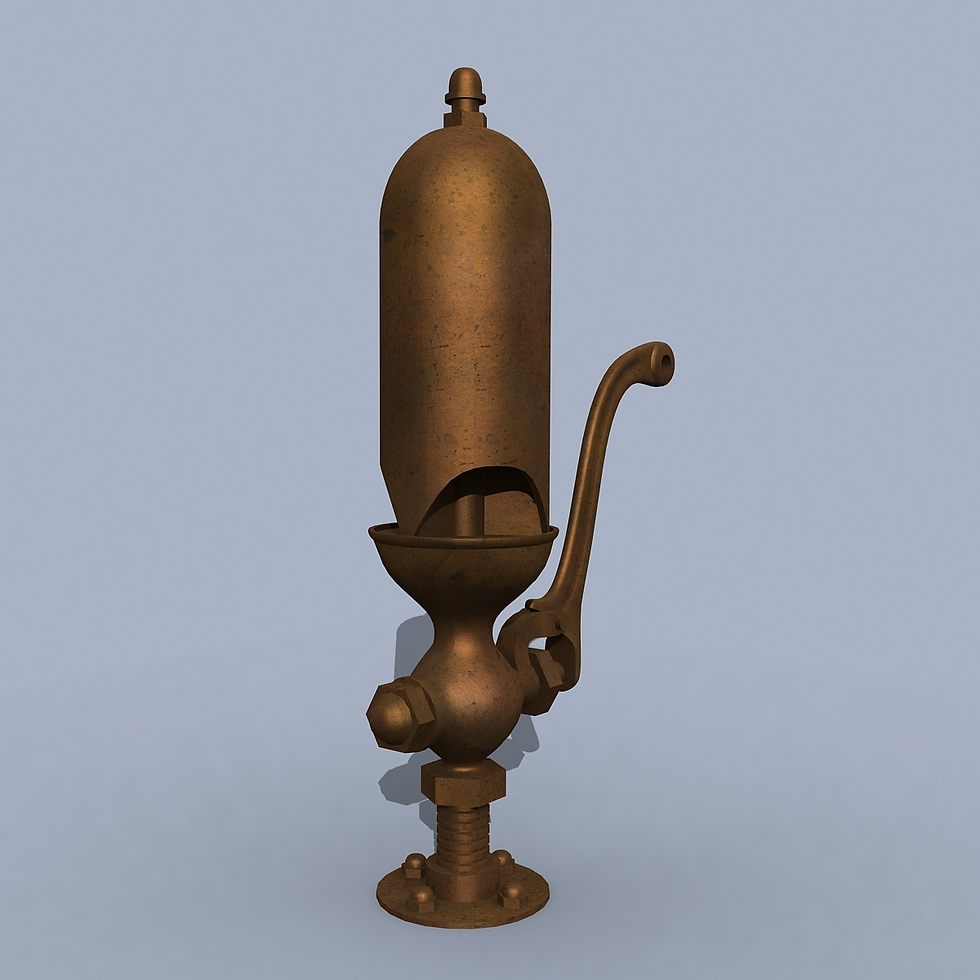Whistle While You Work
- Friends of the NRM
- Aug 8, 2021
- 4 min read
Updated: Sep 12, 2022
Types of steam loco whistles and their use. . . . . . .

Well, it’s not unreasonable, is it? Just a toot on the locomotive whistle to signify you are off or to call attention. Standard practice these days, before moving off. And if not a steam whistle, then a horn of some description.
For some of us, the sound of a steam locomotive whistle means everything about our railway memories. My father said he could always recall the sound of locomotives shunting coal wagons at night. I thought that perhaps whistling was banned during night time hours but, then, I recall my own experiences and remembered much the same. Yes, it was definitely all hours. Residents close to locomotive sheds and goods sidings frequently complained – not just about the whistles but the blowing off, excessive smoke and noise. But it was, well, the railways after all, noisy places.

It was an obvious conclusion back in the early days – a moving locomotive needed some sort of means of calling attention to itself, for safety reasons as much as anything else. The first use of a distinctive railway locomotive whistle (as opposed to a land based traction engine) probably occurred during the early 1830’s, possibly on the Leicester to Swannington railway. Designed by Stephenson himself, it was a ‘steam trumpet’ and looked like one, being about 18 inches long and 6 inches across the top, a formidable instrument. Some speculated that it was an echo of the hunting horn famously used by the hunts in the county of Leicestershire. A new meaning behind the sobriquet ‘iron horse’?
By my day (and probably yours) things had evolved into a world with whistles of different pitches and length. The most famous in Britain was the ‘chime’ whistle found on Gresley’s A4 Pacifics, a small cylinder mounted in front of the chimney which you can check out on Mallard in the NRM. The sound was like no other to me, haunting, vaguely Johnny Cash, North American. I looked it up. A three chime whistle by Gresley, based on a design by Crosby. There were other locomotives too, with slightly different pitches, each deliberately distinctive, as Gresley’s was. It was a stroke of genius, I think, to equip one’s special locomotive with a distinctive whistle. Today we would call it ‘marketing’, I suppose.

Whistles were signals too. ‘John’ described to me various shunting movements at Nottingham Victoria when on station pilot duty. The locomotive was often partly obscured in a tunnel and so a system of codes, rather like morse code, was developed so engine crew, shunters and others all knew what to do. He gave me a full list of codes, some regularly used and some obscure to say the least (I liked the one about backing down onto a train containing a coffin). I asked if the codes were in any way based on signalling bell codes but he thought not – different purpose, different situation, and, anyway, too much of a chance of confusion.
Then there was ‘Dave’ and his firing days, also in Nottingham. ‘You could set off and not be home for a few days if you had to cover for an absence, or a failed engine. When we went north up the Erewash Valley line I used to give a toot as we passed my house so the wife would know it was me and I might be late back.’ Late back meant 4 days on one occasion, taking in Carlisle, Leeds, Manchester and, curiously, Prestatyn.
Those of us brought up on the Reverend W Awdry might recall that whistles conferred human characteristics on the locomotives. Think of Henry the big engine, think aggression or arrogance. Sometimes the though entered my head too. Here is an aggressive 9F whistling ‘get out of my way, I can’t stop(!)’ or an imperious GWR ‘King’ whistling to attract attention – all that gleaming brass and green paintwork, those chocolate and cream coaches….. A tiny peep from a shunting JInty – ‘excuse me, do you mind if I just put this wagon over there please?’

It was an obvious point that early steam engines needed some sort of whistle and that it should be powered by the very energy source that moved the locomotive. You wouldn’t have a clockwork horn would you? And if history is right, why not make a statement of it? A hunting horn? A haunting chime. And it had to be loud too, to make itself heard amongst all the other bangs, rattles, rumbles and roars that make up a railway. In being loud and distinctive the whistle became a part of the steam locomotive landscape, a collecting item with countless recorders up and down the land. Today, it’s that horn, single or two tone. Why not, then, amplified mobile phone ring tones? Very distinctive – ‘The Ride of the Valkyries’ sounding out as the 10 05 York to Kings Cross Azuma approaches Doncaster?
Maybe not. Maybe we might just pause a moment, though, and remember what a whistle means to us in our memory and how sounds are so evocative and so much a part of the railway we remember.
To recall the great gathering at York of all the preserved A4s and listen to the whistling, enjoy this short video.
‘Polyphemus’
John Swanwick
Please use the box at the bottom of the page to provide a comment. Your e-mail will not be published and your comments will just be linked to this item and not used elsewhere.
[E08A, HO1]





Comments